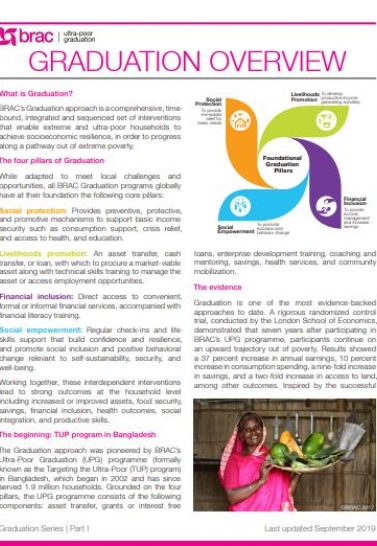BRAC. (2020). Graduation Model Overview.
What is Graduation?
BRAC’s Graduation approach is a comprehensive, timebound, integrated and sequenced set of interventions that enable extreme and ultra-poor households to achieve socioeconomic resilience, in order to progress along a pathway out of extreme poverty.
The four pillars of Graduation
While adapted to meet local challenges and opportunities, all BRAC Graduation programs globally have at their foundation the following core pillars:
- Social protection: Provides preventive, protective, and promotive mechanisms to support basic income security such as consumption support, crisis relief, and access to health, and education.
- Livelihoods promotion: An asset transfer, cash transfer, or loan, with which to procure a market-viable asset along with technical skills training to manage the asset or access employment opportunities.
- Financial inclusion: Direct access to convenient, formal or informal financial services, accompanied with financial literacy training.
- Social empowerment: Regular check-ins and lifeskills support that build confidence and resilience, and promote social inclusion and positive behavioral change relevant to self-sustainability, security, and well-being.
Working together, these interdependent interventions lead to strong outcomes at the household level including increased or improved assets, food security, savings, financial inclusion, health outcomes, social integration, and productive skills.

